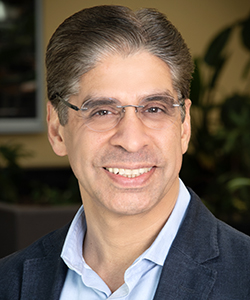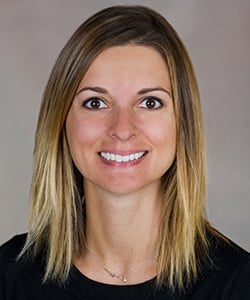"The Full Spectrum of Pain Care": Get Ready for the 24th Annual Pain Medicine Meeting in Austin, Texas!
Cite as: Bhatia A, Christiansen S. The full spectrum of pain care: get ready for the 24th Annual Pain Medicine Meeting in Austin, Texas. ASRA Pain Medicine News 2025;50. https://doi.org/10.52211/asra050125.003.
Pain Medicine is at a crossroads in the United States and around the world. Advancements in criterion-based assessment of pain syndromes, personalized therapies, and targeted interventional procedures have benefited countless patients with pain in the last decade. And yet, there are doubts cast by some on the diagnoses of pain syndromes, utility of evidence-based treatments, and the value of multimodal care for people with pain. The need for a unified front from healthcare providers to ensure delivery of the best possible care at the right time to our patients with pain is paramount. The ASRA Pain Medicine 24th Annual Pain Medicine Meeting is the right place to engage in conversations about strategies to advance the science and art of pain medicine with the goal of acquiring evidence-based and actionable knowledge to help patients with pain.
The current healthcare landscape offers us opportunities to harness novel research methodologies, new technologies such as artificial intelligence, and develop partnerships with those in the circle of care for our patients. It is with this background in mind that we have planned ASRA Pain Medicine’s upcoming 24th Annual Pain Medicine Meeting in Austin, Texas, from November 13-15, 2025. The theme of this meeting is “The Full Spectrum of Pain Care.” This has multiple connotations – the program for this meeting spans the care pathway from prevention to treatment; the target demographic is the healthcare community that cares for these patients and will attend the meeting, including physicians, surgeons, trainees, nurses, psychologists, physical therapists, researchers, military personnel, and others; and the goal is the dissemination of diagnostic and treatment modalities for patients with pain. In other words, there will be something to learn, discuss, assimilate, and take away for everyone who attends the meeting!

Some themes will recur throughout the meeting, including tips on billing and coding (Dr. Trent Emerick - thank you for presenting this!) and panel discussions that engage the attendees. These themes will ensure attendees leave the meeting with actionable information that can help them in their practice. The luxurious JW Marriott Austin, located in the heart of downtown, serves as the venue for this meeting, offering numerous opportunities to engage with esteemed faculty, network with colleagues and industry professionals, and learn from the best. After spending the day learning the latest knowledge and discussing current controversies in pain medicine, please plan to enjoy Austin, a vibrant city known for its delicious food and live music venues, all within walking distance of the hotel.
We list below the full spectrum of session tracks that will run through the meeting. We want to spoil you with lots of choice and make you wish that you could be in more than one place at a time!
Refresher Course: This course will be held on the first day of the meeting, and it will feature sessions dedicated to outlining strategies to help patients with problematic use of opioids, including methadone and buprenorphine. To address current challenges in pain medicine practice, a session will feature a discussion on strategies to navigate falling reimbursements, rising practice costs, and adverse recommendations for interventional procedures from certain regulatory health authorities. The second half of this day will start with talks on recent advances in cancer pain management, and we will end the day with a session on the ethics and economics of pain therapies without insurance coverage, including intravenous infusions for pain.
Plenary sessions: The plenary sessions are scheduled on the second and third days of the meeting. The second day of the meeting begins with a “Special Considerations for Special Populations” session, which will provide updates on assessing and treating pain in children, older adults, and pregnant individuals. This session will conclude with an update on strategies to minimize complications associated with neuromodulation implants. As mentioned at the beginning of this article, precisely and longitudinally assessing the outcomes of our treatment interventions has never been more important than it is now. There will be a plenary session dedicated to this topic that will span the gamut from collecting data in routine clinical care to leveraging newer research methodologies for answering questions about the efficacy and safety of treatments. This will be followed by a session that provides practical tips on running a pain practice with the right kind of team. The second day of the meeting ends with a plenary session on lifelong learning and career development, including how to train as a leader in pain medicine.
The third day of the meeting will feature plenary sessions on new procedures for spinal pain, including multifidus stimulation, basivertebral nerve radiofrequency ablation, and a surgeon presenting a perspective on the role of interventional pain procedures. Artificial Intelligence (AI) is affecting all aspects of healthcare, and pain medicine is not immune to this trend. We have planned an entire session on the current role of AI in pain medicine with talks on opportunities and threats to care as well as presentations on how AI can both enhance and harm clinical research. We end the meeting with two plenary sessions that explore contrasting approaches to treating pain – neuromodulation and neurodestruction. The session on neuromodulation will focus on controversies in spinal cord stimulation and intrathecal drug delivery. The session on neurodestruction will address chemical and thermal ablative therapies with a discussion of the current status of regenerative medicine for pain.
Workshops: The ASRA Pain Medicine fall meetings are renowned for offering the opportunity to learn the full spectrum of interventional techniques through workshops taught by experienced faculty. This meeting is no exception with an outstanding menu under Dr. Ryan D’Souza’s leadership. Recognizing the diversity of professional backgrounds and experiences among our attendees, we offer workshops from beginner-level fluoroscopy and ultrasound-guided procedures to advanced procedures such as BVNA, minimally invasive lumbar decompression, vertebroplasty, sacroiliac joint fusion, and shoulder joint denervation as well as a simulation station for learning crisis management in pain medicine. As always, the workshops will have limited spots to ensure an optimal ratio of learners to faculty. So do not forget to register early for these 24 fantastic training opportunities!
Problem-Based Learning Discussions (PBLD): This year’s fall meeting will provide an excellent opportunity for attendees to discuss a full spectrum of challenging clinical scenarios and receive advice from expert faculty and other group members during the 20 PBLD sessions offered during lunchtime on the first day of the meeting. Some examples of these PBLD topics include addressing the failure of ablative treatments for spinal joint pain, tackling the increase in opioid requirements after surgery, recognizing red flags for patients with headaches, and the potential of non-traditional revenue streams in pain medicine. Experienced faculty from the United States, Canada, and Europe will facilitate these discussions with the goal of enhancing attendees’ critical thinking and self-directed learning.
Ask the Experts Interactive Sessions: The second day of the meeting will feature several Ask the Experts Interactive Sessions, offering engaging discussions where participants can directly interact with the panelists by asking questions and clarifying doubts in real-time. These sessions will include the opportunity to pick up tips about physical and mental health therapies for patients with pain. Controversies about analgesic medications and procedures, including muscle relaxants, gabapentinoids, and cannabinoids, will be addressed, and skills to recognize opioid use disorder and strategies to manage it will also be discussed. We also look forward to a robust debate about the future of pain medicine fellowships and practice with perspectives from program directors as well as current and recent trainees with a spectrum of professional backgrounds represented among the panelists.
ASRA-ASA Practice Management Portfolio: The third day of the meeting will feature three sessions in this portfolio – the first of which will focus on optimizing the final year of training and the factors to consider when deciding between academic and private practice. The second session will focus on bread-and-butter issues, including conflict management, optimizing billing and coding workflows, and understanding the healthcare business model. The final session in this portfolio will focus on financial planning, career trajectory changes, and strategies to promote personal wellness.
Physician Assistant, Nurse Practitioner, and Nursing Program: The third day of the meeting will also feature this program with sessions tailored to our allied health colleagues. A primer on refreshing knowledge of pain assessment and treatment strategies will be followed by sessions on dealing with challenging patients and physicians and tackling substance abuse by patients with pain. A discussion on optimizing and troubleshooting neuromodulation trials, as well as recognizing and addressing complications in patients with implanted therapies, will conclude this day.
This year’s fall meeting will also feature several pre-meeting events on November 12, 2025, including the ASRA Pain Medicine – Association of Pain Program Directors Advanced Interventional Pain Management Course and Workshops for fellows, as well as a session focused on acute and chronic pain issues in military personnel and veterans.
We would like to thank the Scientific Planning Committee, the ASRA Pain Medicine CME Committee, and the ASRA Pain Medicine Board for their support and guidance on the agenda for this meeting. We are excited to share information about this fantastic meeting with you. Whether you are an ASRA Pain Medicine regular, have not been to an ASRA Pain Medicine fall meeting in a while, or this is your first meeting, this is the meeting to attend. Welcome!
We are looking forward to seeing you in Austin, TX!
Anuj Bhatia, MD, and Sandy Christiansen, MD
#ASRAFALL25 Program Chairs

